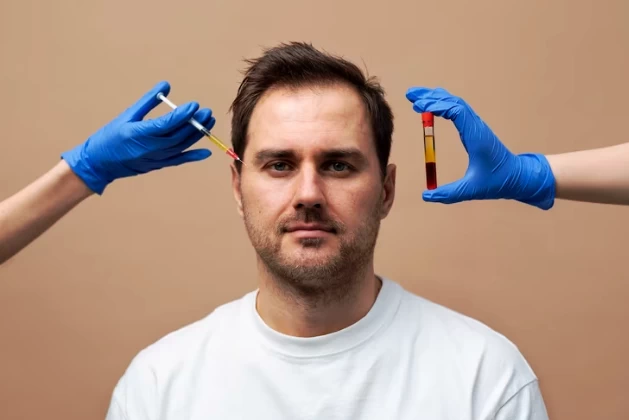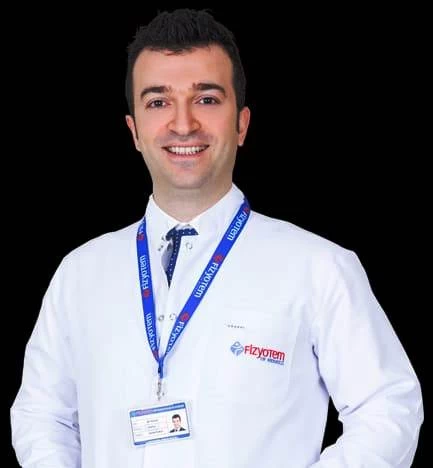
A Powerful Alliance for Accelerated Natural Healing: PRP and Sanakin
- A Powerful Alliance for Accelerated Natural Healing: PRP and Sanakin
- How Is PRP Therapy Administered?
- What Are the Advantages of PRP Therapy?
- What Are the Applications of PRP Therapy?
- What Is Sanakin?
- Combining PRP and Sanakin
What Is PRP Therapy?
PRP Therapy (Platelet Rich Plasma) is a medical treatment method that aims to accelerate healing by injecting platelet-rich plasma obtained from a person's own blood into a injured or damaged area. PRP therapy is used in the treatment of soft tissue injuries and certain joint problems such as osteoarthritis.
The fundamental principle of the treatment is to harness the body's natural healing mechanisms. A large portion of our blood consists of plasma, which is the liquid component, and blood cells. Platelets are responsible for blood clotting and also contain growth factors that promote healing. PRP therapy targets these platelets to expedite the healing process in the injured area.
How Is PRP Therapy Administered?
PRP (Platelet Rich Plasma) therapy is administered by extracting a small blood sample from the patient's arm or elbow before the treatment begins. This process is similar to a regular blood draw and is typically painless.
- Processing of Plasma: The collected blood sample is processed in a specialized centrifuge device. The centrifuge separates the plasma from red blood cells and other components, yielding platelet-rich plasma. The plasma is enriched with platelets, growth factors, and other beneficial cells.
- Injection: Platelet-rich plasma is then injected into the injured or damaged area. Injections can be performed using a needle or under ultrasound guidance. The injection helps accelerate the healing process and support tissue regeneration.
- Follow-up and Recovery: PRP therapy is usually a brief procedure, and patients can often be discharged on the same day. After treatment, your doctor will recommend an appropriate recovery process and activity restrictions. Most patients can quickly return to their daily activities, but the full recovery process and results may vary from person to person.
PRP therapy is a safe and effective treatment method that can be used in various medical conditions and injuries. However, it is important to consult with a healthcare professional before undergoing the treatment. An expert doctor will assess whether it is suitable for you and provide you with more information about the treatment process.
What Are the Advantages of PRP Therapy?
PRP (Platelet Rich Plasma) therapy is an effective and safe treatment method with a range of advantages that can be utilized in various medical conditions and injuries. Here are the advantages of PRP therapy:
- Low Allergy Risk: PRP therapy uses plasma obtained from the person's own blood, so the risk of allergic reactions is significantly lower compared to treatments that involve external components.
- Minimally Invasive: PRP therapy is a non-surgical and minimally invasive treatment method. It involves blood collection and injections, eliminating the need for major surgery.
- Promotes Natural Healing: PRP stimulates the body's natural healing mechanism through its platelets and growth factors, supporting the healing and regeneration of damaged cells.
- Fast and Effective Results: PRP therapy can expedite the healing process. Many patients experience quick results and can return to their daily activities rapidly.
- Minimal Side Effects: PRP therapy is generally well-tolerated, with minimal side effects such as mild pain, swelling, and redness at the injection site occurring rarely.
- Wide Range of Applications: PRP therapy can be applied to various conditions, from muscle injuries to tendon injuries, osteoarthritis treatment, and chronic wound care.
- Alternative to Tissue Transplantation and Surgery: In some cases, PRP therapy can reduce the need for tissue transplantation or surgical intervention.
- Short Treatment Duration: PRP therapy can often be administered as a single-session treatment, allowing patients to achieve effective results in less time.
PRP therapy can be an effective and safe treatment method for suitable candidates. However, since each patient's condition is unique, it is important to consult with an expert before undergoing treatment. A qualified doctor will determine the most suitable treatment for you and provide you with more information about the treatment process.

What Are the Applications of PRP Therapy?
PRP (Platelet Rich Plasma) therapy is a medical treatment method with a wide range of applications. It can be effective, especially in the treatment of soft tissue injuries and certain joint problems. The main applications of PRP therapy include:
- Muscle Injuries: PRP therapy can be used to expedite the healing process in sports injuries and other muscle injuries such as muscle strains, tears, and other muscle damage.
- Tendon Injuries: Tendons are the connective tissues that attach muscles to bones and injuries to tendons often have slow healing processes. PRP therapy can support the healing of tendon injuries, especially in cases of tendonitis, tendinosis, and tendinopathies.
- Osteoarthritis Treatment: Osteoarthritis is a joint condition characterized by the deterioration and damage of joint cartilage. PRP therapy can be used to alleviate joint pain, improve joint function, and enhance the patient's quality of life in the treatment of osteoarthritis.
- Chronic Wound Care: PRP therapy can be employed to promote faster healing of chronic wounds. It is particularly useful in cases where wound healing is problematic.
- Post-Surgical Recovery: After certain surgical procedures, PRP therapy can be used to accelerate the healing of surgical sites and reduce the risk of complications.
- In Dentistry: PRP therapy can be used to expedite the healing of jawbone following dental implantation or tooth extraction, enhancing the success of dental implant procedures.
PRP therapy can be applied in various medical fields due to its targeting of the body's natural healing mechanisms. However, the applicability and effectiveness of PRP therapy should be determined through individual assessment and evaluation.
What Is Sanakin?
Sanakin is a specialized treatment formulation used in the medical field to stimulate and facilitate cellular-level healing and repair. These serums aim to support the healing process of tissues through the use of biological active agents. Sanakin are often used in conjunction with other treatments like PRP (Platelet Rich Plasma) therapy or as a standalone method in various medical procedures.
Sanakin are referred to as "smart" because they contain biological active agents that target specific cellular processes. These active agents typically include growth factors, cytokines, hyaluronic acid, and other biological components. These components promote cell growth, regeneration, and tissue repair, thereby expediting the healing process.
During PRP therapy, Sanakin can be used in conjunction with PRP to enhance the activation of platelets. This ensures that platelets are more effectively activated and can have a stronger impact on supporting and accelerating healing.
Sanakin are commonly used in the treatment of injuries, tissue damage, and certain medical conditions. These serums are administered in specialized medical centers and healthcare facilities. Since each patient's condition is unique, the use of Sanakin s in a treatment plan should be determined based on the patient's needs and the assessment of a healthcare professional.
It's important to note that research and development in the field of Sanakin are ongoing. Therefore, staying updated on current medical knowledge and practices can help patients achieve the best results.
Combining PRP and Sanakin
When PRP (Platelet Rich Plasma) therapy and Sanakin are used together, they can create synergistic effects to further accelerate the healing process. This combination can be preferred in specific medical conditions and treatments. Here are some situations where PRP and Sanakin are used together:
- Soft Tissue Injuries: In cases of muscle, tendon, and ligament injuries, PRP therapy can promote the healing of damaged tissue, while Sanakin can support this healing process, leading to faster results.
- Joint Problems: For conditions like osteoarthritis or joint damage, PRP therapy can help reduce inflammation and pain, and Sanakin can contribute to the repair of joint cartilage.
- Post-Tissue Transplantation Recovery: After surgical procedures requiring tissue transplantation, PRP therapy can enhance tissue regeneration, while Sanakin can assist in the recovery of the transplanted tissue.
- Chronic Wound Healing: When treating chronic wounds, PRP therapy can stimulate wound healing, while Sanakin can further expedite tissue regeneration.
- Sports Injuries: In sports injuries, PRP therapy can aid in tissue repair, while Sanakin can support the athlete's quick return to the field.
- Skin Rejuvenation and Aesthetic Procedures: In procedures related to skin rejuvenation and post-aesthetic surgery, PRP therapy can promote skin renewal, while Sanakin can enhance collagen and elastin production for better results.
These are examples of situations where PRP and Sanakin can be used together, but it's essential to remember that every medical condition requires a personalized treatment plan based on individual needs and expert medical evaluation. Therefore, the decision to combine PRP and Sanakin in a treatment plan should be made by a qualified healthcare professional.



